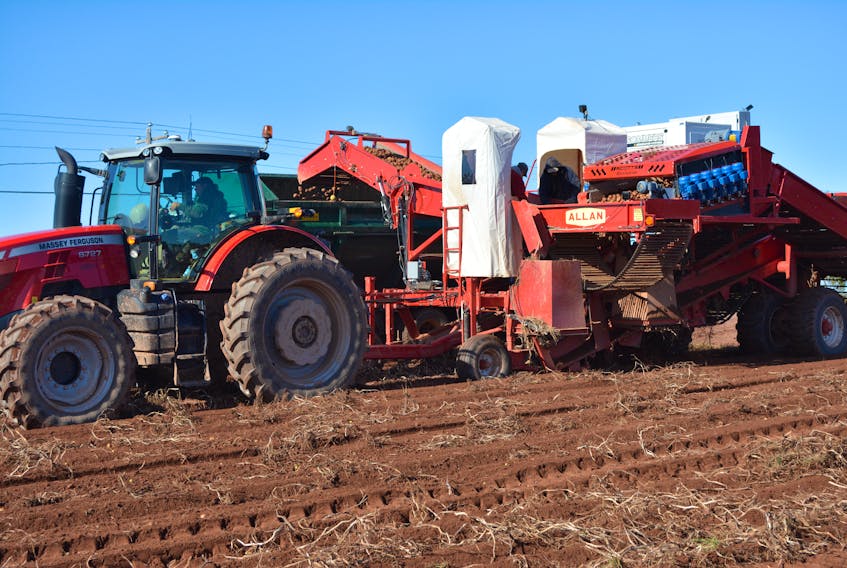KNUTSFORD, P.E.I. — Where conditions permitted, potato harvesting equipment was back on the land around mid-week, after being shut down by rain noontime Monday.

Jeff Smallman was operating a tractor that was pulling a harvester through a field in Knutsford early Wednesday afternoon. He said growers were being selective about what fields they went into, leaving heavier land to dry out some more.
Elsewhere, in Cape Wolfe, David Sweet found conditions good for digging. By that time Sweet Farms already had about 380 of its 850 acres of potatoes dug.
“If we get two good full days, and hopefully part of Saturday, we will not be in too bad of shape,” he suggested.
The forecast, however, had rain starting up again Saturday morning.
Sweet estimated the farm’s potato yield to be about 30 percent better than last year, but he admitted their fields did not suffer the effects of dry conditions in 2018 as much as many other farms in the area. He suggested the better growing conditions in the western end of the province in 2019 will see some growers with 50 percent better production than in 2018.
Smallman agrees. His farm’s production is way ahead of last year.
Where the two years are similar, though, is in harvesting conditions. Those conditions are almost as wet as last year, Smallman said.

Potatoes are not the only crop affected by the weather.
Glengarry dairy farmer Daniel MacDonald said modifications had to be made to the farm’s corn chopper so that it would pick up stalks flattened by post-tropical storm Dorian on Sept. 7.
The one saving grace, he suggested, was the ground was so wet from Dorian’s precipitation that the corn stalks tipped over at the roots instead of breaking off, so they continued to grow and mature.
“It was seven to eight feet tall and now it’s seven to eight feet long (vertical),” he said, describing his corn fields.
They tried their chopper last Saturday.
“We were just wasting our time,” MacDonald said.
Then they made some modifications and this week they’ve been able to pick up about 95 percent of the stalks. He described the yield as good.

Other crops
Most of the grain harvest has been completed, but there are still soybeans and peas to combine, and farmers have had to pick and choose their days to avoid tearing up their fields.
West Devon dairy farmer Harold MacNevin said his harvest is complete except for some straw to bale.
“Just when it starts to dry up and you get it raked, then it rains again.”
MacNevin, president of Dairy Farmers of P.E.I., said the dairy industry needs quality corn and grain as a feed source for their cows. He estimates at least 25 percent of the corn crop is laying down, leaving it susceptible to mold and mildew. He said the situation is leaving the crop “down in quantity, down in quality.”
Such challenges are not uncommon to the dairy industry or other agriculture sectors, MacNevin acknowledges.
“This is farming.”
The general manager of the PE.I. Potato Board, Greg Donald, estimated Thursday that 40 percent of the Island’s potato crop has been harvested and the industry should be approaching the half-way point by the end of day Friday.









